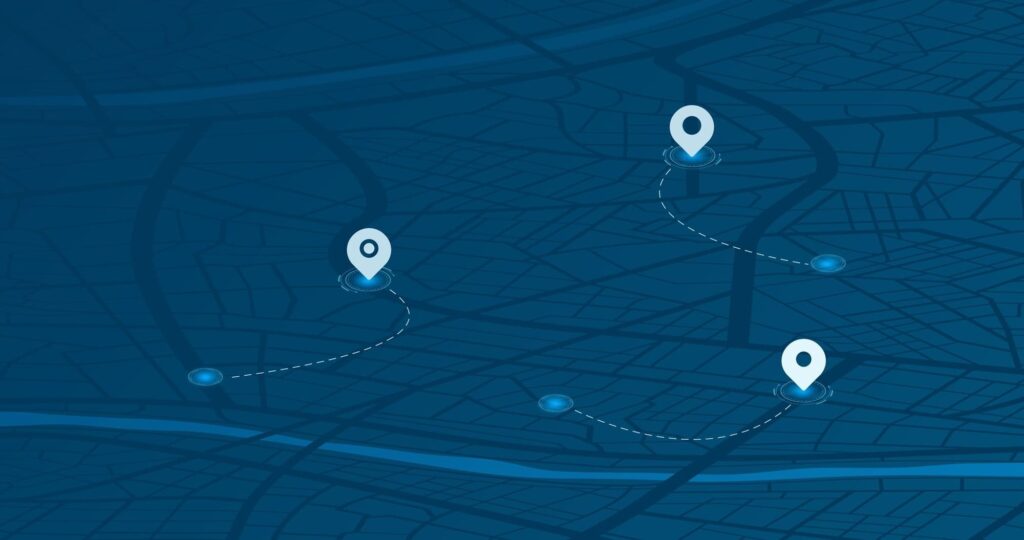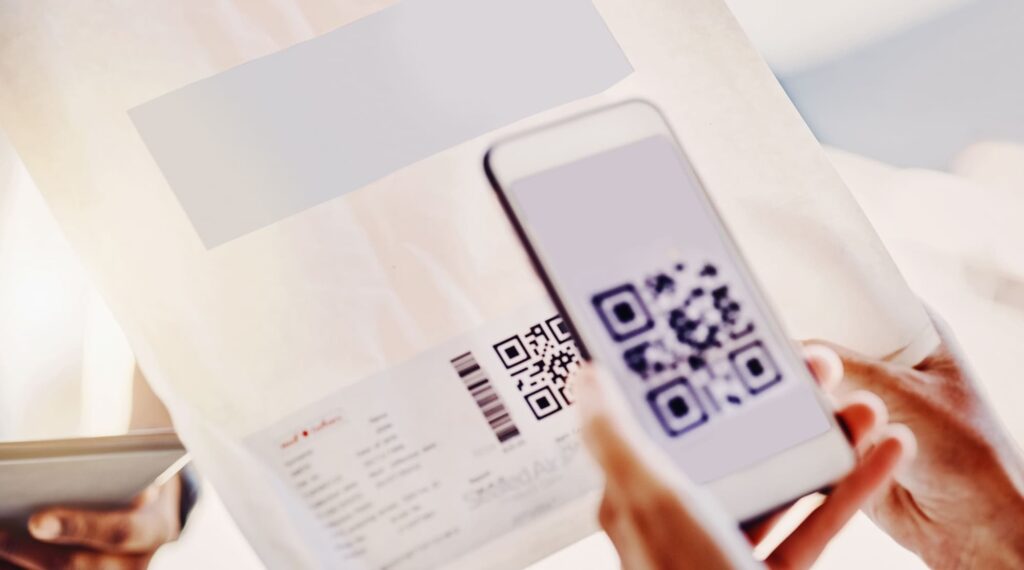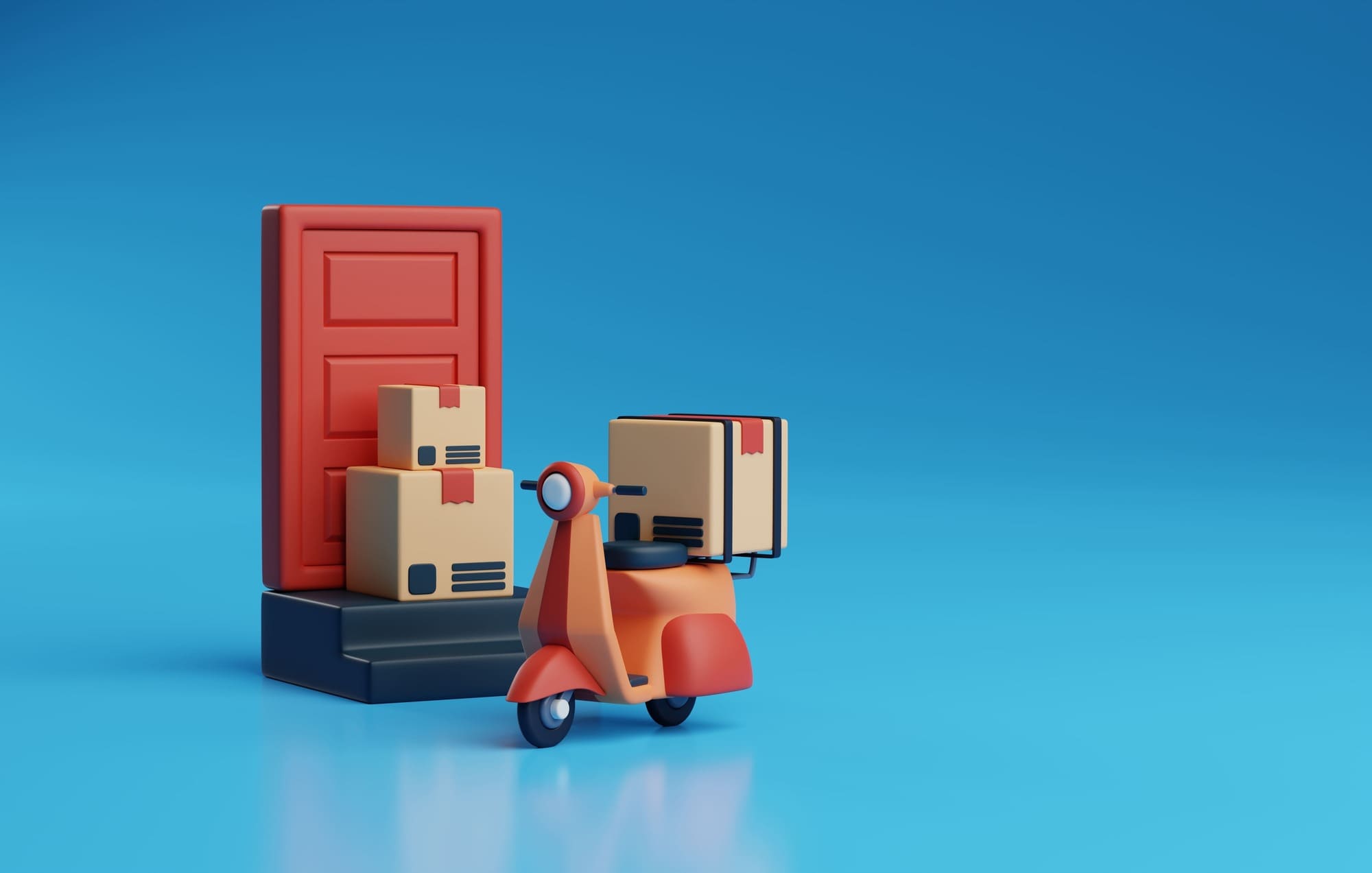Guide to optimizing last-mile deliveries: courier management tips
90% of consumers see two- to three-day delivery as the baseline, and 30% of consumers expect same-day delivery. [1]
The last mile delivery refers to the final stage of the logistics chain where the goods are transported from a distribution center or warehouse to the end customer’s location. This phase is important as it directly impacts the customer experience and has the highest potential for delays and issues.
The implications of last mile delivery extend beyond customer satisfaction. It also has profound business implications. A seamless last mile delivery process can lead to higher customer satisfaction rates, reduced return rates, and improved overall customer loyalty.
Challenges of last mile delivery
Last-mile delivery presents several unique challenges:
1. The high cost of last-mile delivery
Between 2018 and 2023, the share of last-mile delivery out of total shipping costs went from 41 percent to 53 percent. This is due to the fact that orders need to be delivered to individual locations, often involving small parcel loads. This is especially true in urban areas, where the high density of deliveries can significantly increase costs. [2]
2. Businesses face the challenge of meeting increasing customer expectations
In the digital age, customers want their orders delivered rapidly, reliably, and for free. 61% of customers want their packages even faster – within 1-3 hours of placing an order. To meet these high standards, businesses need to leverage advanced technologies and data analytics to improve their delivery speed, reliability, and transparency. [3]
3. Dealing with urban traffic
Delivering orders in densely populated areas can be slow due to heavy traffic, leading to delivery delays and increased fuel costs.
4. Rural deliveries pose their own set of difficulties
The long distance between stops can increase the time and cost per delivery. Businesses can tackle this challenge by consolidating deliveries or partnering with local businesses to serve as pickup points.
Do you want to find out more solutions to overcome the challenges of last mile deliveries? Read our article!
What is last mile delivery optimization?
Last mile delivery optimization involves utilizing advanced technologies, data analysis, and innovative strategies to streamline and expedite the delivery process. The goal is to enhance the efficiency and cost-effectiveness of the final stage of delivery.
Strategies for optimizing last-mile delivery
Optimizing last-mile delivery is decisive in ensuring your business stays competitive and meets customers’ expectations. This part of the logistics chain has a significant impact on customer satisfaction and operating costs. Therefore, it’s essential to utilize strategic approaches to enhance its efficiency.
Here are some strategies that you can employ.
1. Automatic order allocation

Essentially, this involves a system that automatically assigns deliveries to couriers based on predefined rules. These rules could be based on factors such as cost, time, and distance. The system takes all these factors into account and assigns the delivery to the most efficient courier. Therefore, this process not only optimizes the delivery process but also helps in reducing costs.
Distance is a key factor that the automatic order allocation system considers. For instance, for the same destination, the price difference between couriers can be up to 10 Euros, depending on the number of additional taxable kilometers. By using an automatic order allocation system, you can ensure that your business is choosing the most cost-effective courier for each delivery.
| Innoship automatically finds eligible carriers based on order details, pick-up location, destination, and most importantly, your preferences.
2. Multiple delivery options
Offering a variety of delivery options can cater to different customer needs and preferences. These may include:
- same-day delivery for urgent orders;
- next-day delivery for those who plan ahead;
- lockers for customers who prefer self-collection;
- pick-up/drop-off (PuDo) points for added convenience.
49% of shoppers said that they have bought goods from one retailer over another because they provided more delivery options. This illustrates how flexible delivery options can significantly increase your conversion rate. [4]
| Innoship provides access to:
- 150 + Couriers;
- 98% Access to couriers;
- 135000 Pick Up & Drop Off Points;
3. Predictive analytics in logistics
By leveraging historical data, the technology can anticipate demand patterns. For instance, if data shows that certain locations consistently require more deliveries on specific days or times, businesses can plan their delivery schedules and routes accordingly and ensure they have sufficient resources to meet the demand.
However, the benefits of predictive analytics extend beyond demand forecasting:
- regular analysis of delivery metrics such as delivery time, cost per delivery, and rate of failed or late deliveries can reveal areas of operations that need improvement;
- predictive analytics can also help businesses forecast potential risks. For example, by analyzing daily or monthly traffic patterns, businesses can anticipate and avoid potential delays, thereby improving delivery efficiency;
- seasonal buying trends can also be predicted, enabling businesses to plan their inventory and delivery resources in advance;
- predictive maintenance, which uses data to predict potential vehicle failures, can also help avoid unexpected disruptions in the delivery process.
4. Real-time tracking

Real-time tracking has become an industry standard in optimizing last-mile deliveries, offering a myriad of benefits to both businesses and customers. Its power lies in the transparency it provides, allowing businesses to proactively solve problems while improving customer satisfaction.
This technology provides customers with regular updates on their deliveries, including the estimated time of arrival. This constant communication not only keeps customers informed but also significantly enhances their overall experience.
| Innoship offers you a simple and easy way to track the statuses of your orders and cash on delivery reimbursement in real time, in one place.
5. Micro-fulfillment centers
Micro-fulfillment centers are quickly becoming a key strategy for optimizing last-mile delivery. As the name suggests, these are smaller, tech-enabled warehouses strategically located in urban areas, closer to your customers. The advantage? It significantly reduces delivery times and consequently, transportation costs. By having your inventory closer to your customers, you are not only providing quick service but also enhancing customer satisfaction.
Advanced warehouse management systems, robotics, AI, and machine learning are used to keep operations smooth and efficient. These technologies manage inventory and streamline operations, thereby increasing productivity and accuracy. For instance, warehouse robots can sort and move items faster than humans, while AI and machine learning can forecast demand and manage inventory more accurately.
The beauty of micro-fulfillment centers is that you don’t necessarily have to own them. You can collaborate with local warehouses or other businesses that already have these centers. Such partnerships bring shared resources, reduced operational costs, and the expertise of the partner to the table. It’s a win-win situation where businesses pool their resources to achieve common objectives.
6. Contactless and paperless delivery

As the name suggests, contactless delivery is a method of delivery that eliminates the need for physical contact between the customer and the delivery person, hence ensuring safety for both parties. Meanwhile, paperless delivery refers to the use of digital platforms to manage and track deliveries, eliminating the need for physical paperwork.
There are several advantages to contactless and paperless deliveries:
- for businesses, these methods increase efficiency by speeding up the delivery process and reducing operational costs associated with handling physical paperwork;
- for customers, they offer convenience and peace of mind, knowing that their orders can be delivered safely to their doorsteps.
To implement contactless and paperless deliveries, businesses can leverage digital platforms and mobile applications. These technologies can be used to process orders, assign deliveries, track delivery progress, and collect proof of delivery electronically.
7. Excellent customer service
Proactive Communication also plays a vital role in maintaining excellent customer service. Informing customers about their delivery status, especially if there are any changes en route, can go a long way in managing customer expectations. This can be achieved through SMS or email notifications, providing information about the estimated arrival times.
Transparency is highly valued by customers. In fact, 94% of consumers are likely to show loyalty to a brand that offers complete transparency. Hence, if a delay or an issue occurs during the delivery process, it’s important to communicate this to the customer proactively. This shows that the business values its customers and their time, which can lead to increased customer loyalty. [5]
8. Hassle-free returns
A vital part of optimizing last-mile delivery is ensuring a seamless and hassle-free return policy. This aspect should not be overlooked as it greatly impacts customer satisfaction and can significantly contribute to the overall customer experience.
Ensure that your policy is clear and concise, detailing the terms and conditions, the time frame for returns, and the method to initiate a return! This not only builds trust with your customers but also mitigates potential misunderstandings and disputes in the future.
To encourage customer retention, it can be beneficial to offer incentives for customers to keep the product. This could be in the form of an additional discount or a credit toward their next purchase. This strategy can not only help reduce the logistical challenges and costs associated with returns but also enhance customer satisfaction.
| Return orders also benefit from the Innoship intelligent algorithm of automatic allocation.
Looking ahead, the future of last-mile delivery optimization is brimming with potential. Innovations such as the use of drones or autonomous vehicles for delivery could revolutionize the industry. To maintain competitiveness, businesses must stay abreast with these trends, adapting their strategies as needed.
Sources
[1] “Retail Speaks: Seven Imperatives for the Industry.” McKinsey & Company, McKinsey & Company, 10 Mar. 2021, www.mckinsey.com/industries/retail/our-insights/retail-speaks-seven-imperatives-for-the-industry. Accessed 2 Sept. 2024.
[2] “Last Mile Share of Total Shipping Costs 2023 | Statista.” Statista, Statista, 2023, www.statista.com/statistics/1434298/last-mile-share-of-total-shipping-costs/. Accessed 2 Sept. 2024.
[3] “The Importance of Same Day Delivery – Statistics and Trends – Invesp.” Invesp – Conversion Rate Optimization Blog, 29 Jan. 2018, www.invespcro.com/blog/same-day-delivery/. Accessed 2 Sept. 2024.
[4] “Setting Delivery Expectations | ShipNetwork.” Shipnetwork.com, 2024, www.shipnetwork.com/post/delivery-expectations-increases-sales-customer-satisfaction. Accessed 2 Sept. 2024.
[5] Donlan, Kirk. “How to Build Loyalty and Trust with Brand Transparency.” Emarsys, 7 June 2024, emarsys.com/learn/blog/brand-transparency-drives-customer-loyalty/. Accessed 2 Sept. 2024.







